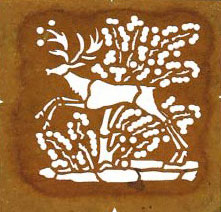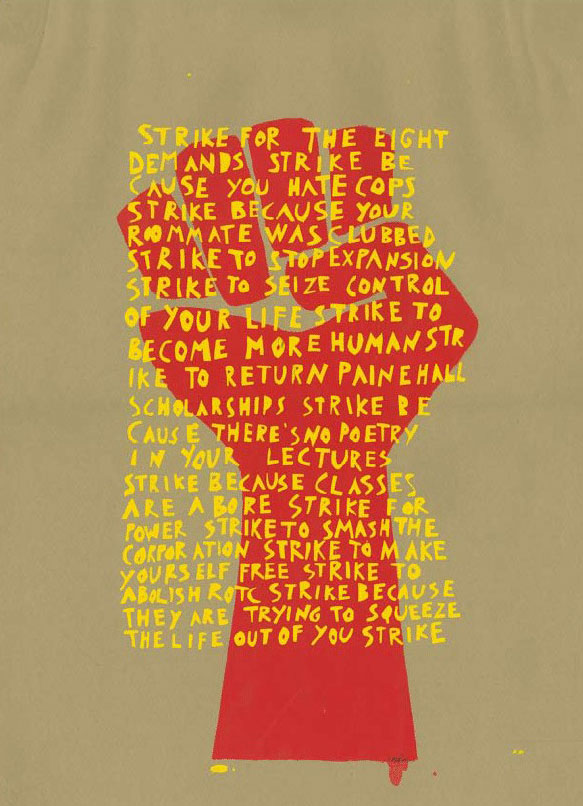- Relief printing
- Intaglio and planographic printing
- Color printing
- Bits and pieces
- Early photography in silver
- Non-silver processes
- Modern photography
- Color notes
- Color photography
- Photography in ink: relief and intaglio printing
- Photography in ink: planographic printing
- Digital processes
- Where do we go from here?
Stencil and silk screen printing

Cardboard stencil. Durr Freedley. Untitled design. c. 1935. 5 x 5" (12.7 x 12.7 cm). The Museum of Modern Art, New York. Gift of Richard Benson. This stencil has four register marks cut in its borders, which indicate that it was used in conjunction with one or more other pictorial elements.
Stencil depends upon a printing matrix with holes in it, through which the ink passes on its way to the support. An ancient system of print technology, stencil had a long life as a method for applying color to black-and-white prints, as in engraved maps, but it has had very little use in bookmaking. The other processes—relief, intaglio, and planographic—all managed to adapt themselves to mechanized production; the plates they use to carry information were refined to fit printing machinery, so that the inking and printing could be done at high speed.

Stencil letters. C. H. Hanson Company. Stencil Set, Marking, Lockedge, Adjustable, Brass, 1 inch size. c. 1945. Each 2 1/2" (6.4 cm) high. The Museum of Modern Art, New York. Gift of Richard Benson. A set of marking stencils made for the United States military during World War II.
But the physical action that stencil entails is too hard to handle and too slow to be easily adapted to the printing press. Even if stencil never had a large role in the book world it is a great process, and reached spectacular form in silk screen printing. The fancy gallery folks call prints made this way “serigraphs,” one of those names, like those used for car models in the automobile industry, that sound swell and don’t mean much.

Silk screen print. Strike Poster Workshop, Graduate School of Design, Harvard University. Strike for the Eight Demands. 1969. 20 7/8 x 14 15/16" (53 x 38 cm). The Museum of Modern Art, New York. Gift of Richard Benson. Silkscreen prints are made with stencils held on an open-weave sheet of stretched cloth. Many modern silkscreen prints use photographic stencils, made by applying light-sensitive emulsion to the screen. Silkscreen is the medium of most of today’s decorated T-shirts.
The underlying principle of the silk screen is to hold the stencil parts on a panel of cloth, one woven openly so that there are spaces within the grid formed by warp and weft. The threads hold the stencil, eliminating the structural requirements we saw in the stenciled letters of the previous plate, and the apertures in the cloth are so fine that the ink that passes through them goes down onto the sheet as an unbroken film.

